Finding the right pair of fluffy slippers1 can be tricky. Too soft, and they lose shape; too hard, and comfort disappears. So how do you find your perfect pair?
The perfect men’s fluffy slippers balance comfort, style, and durability. Look for breathable materials2, sturdy soles, and a fit that feels snug but not tight.
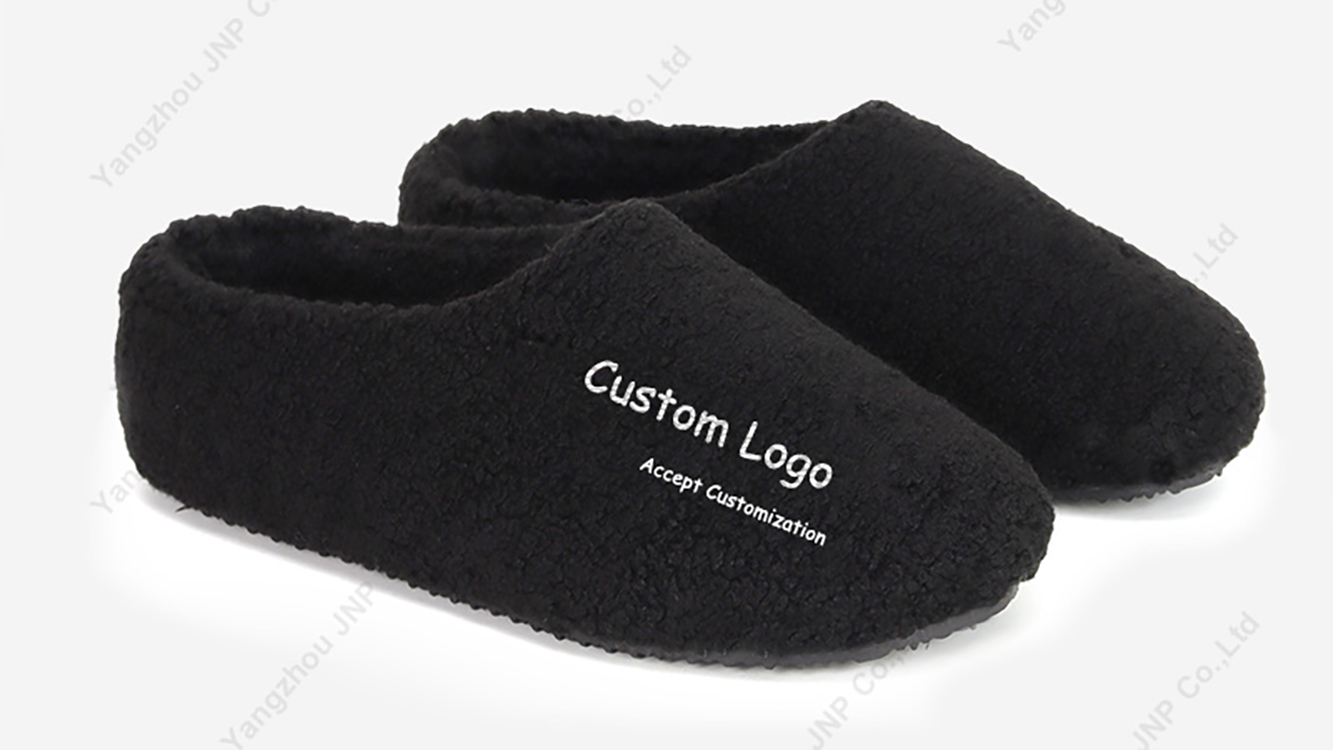
Many men buy slippers without considering how their lifestyle or home habits affect their comfort. Some wear them daily; others only after work. I’ve tested dozens of pairs for our clients, and I’ve learned that each choice—fabric3, sole, and lining—makes a big difference.
What makes men’s fluffy slippers truly comfortable?
Comfort starts from the inside. But not every “soft” slipper means comfort that lasts.
Choose slippers made from natural wool4 or faux fur linings5, with memory foam insoles6 that contour to your feet for long-term comfort.
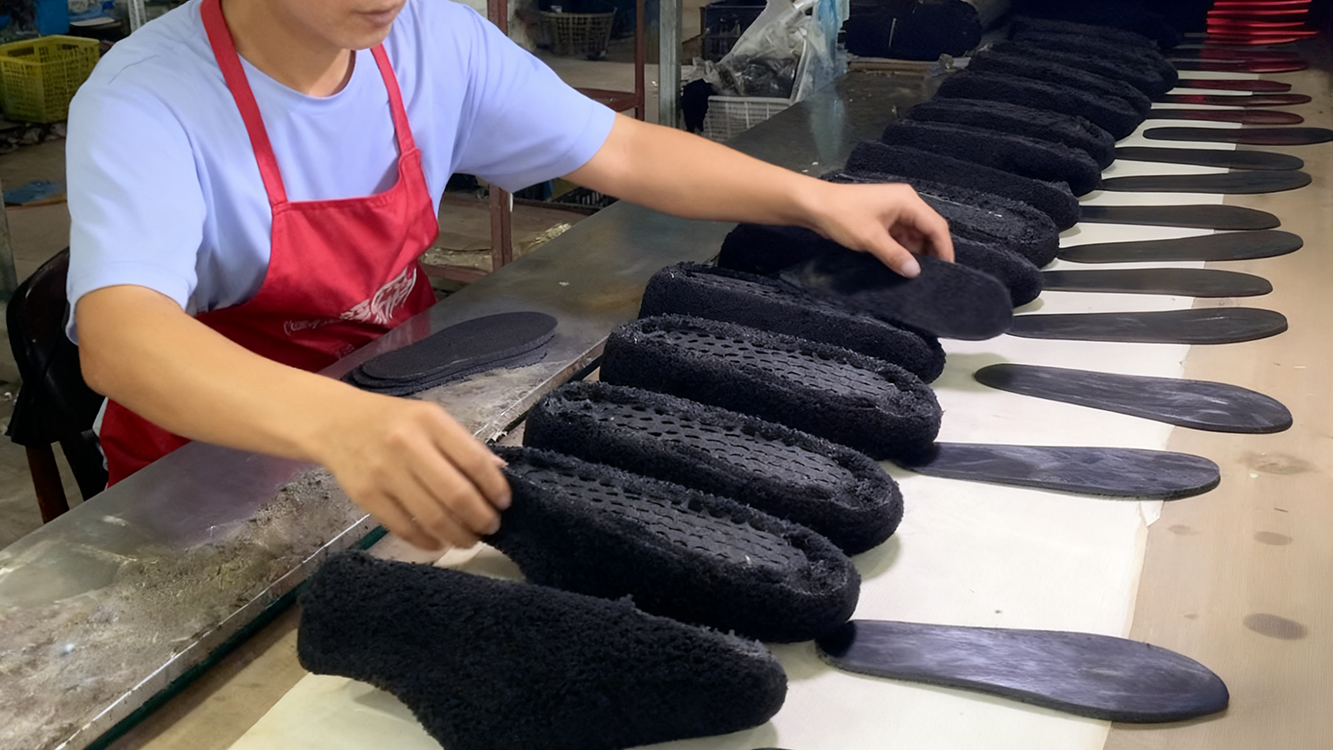
When I work with clients like Amelie, who design for high-end brands, comfort is always the foundation. Wool linings4 adjust to your temperature, keeping feet warm in winter and cool in spring. Faux fur gives the same plush feel but at a lighter price. Memory foam6 adds support for your heel and arch, which helps during long hours at home.
Here’s a simple comparison:
| Material | Key Feature | Ideal For |
|---|---|---|
| Wool | Temperature control | Cold climates |
| Faux Fur | Softness and style | Everyday comfort |
| Memory Foam | Foot support | Long wear use |
If your home has wooden or tile floors7, pick slippers with thicker insoles. You’ll notice the difference instantly.
Which sole type suits your lifestyle best?
The sole8 decides how your slippers perform on different floors.
For indoor use, rubber soles with anti-slip design9 are best. For quick outdoor use, choose a thicker sole with waterproof material10.
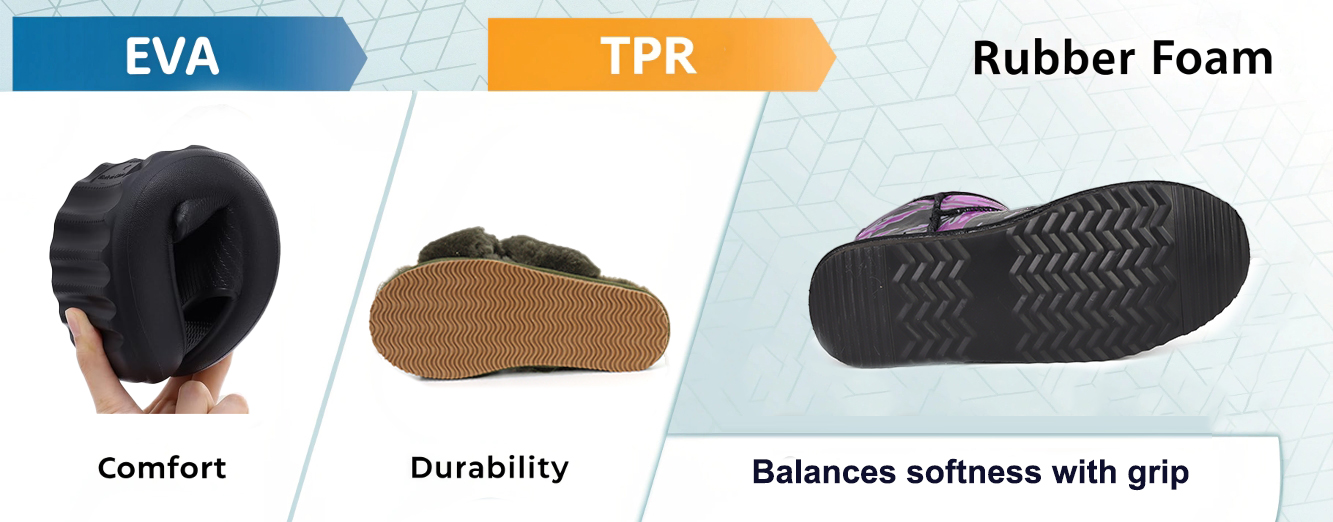
My client Rural, who runs an online trendy brand, often requests mixed-use soles because many of his customers move between indoor and outdoor spaces. Hard EVA11 or TPR soles12 are perfect for that. They’re durable and can handle a quick walk to the mailbox or garden.
For purely indoor users, I recommend light rubber soles9 with soft grip lines—they feel more natural when walking on tiles or wooden floors.
| Sole Material | Feature | Use Case |
|---|---|---|
| EVA | Lightweight, waterproof | Indoor-outdoor mix |
| TPR | Durable, firm grip | Outdoor use |
| Soft Rubber | Quiet, flexible | Indoor only |
Think about your habits—if you often step outside, pick durability. If not, prioritize flexibility and silence.
How to choose the right style for your personality?
Men’s slippers are no longer just “home shoes.” Style13 matters too.
Pick a slipper style that matches your lifestyle—closed-back for warmth, open-back for ease, and boot-style for extra coziness.
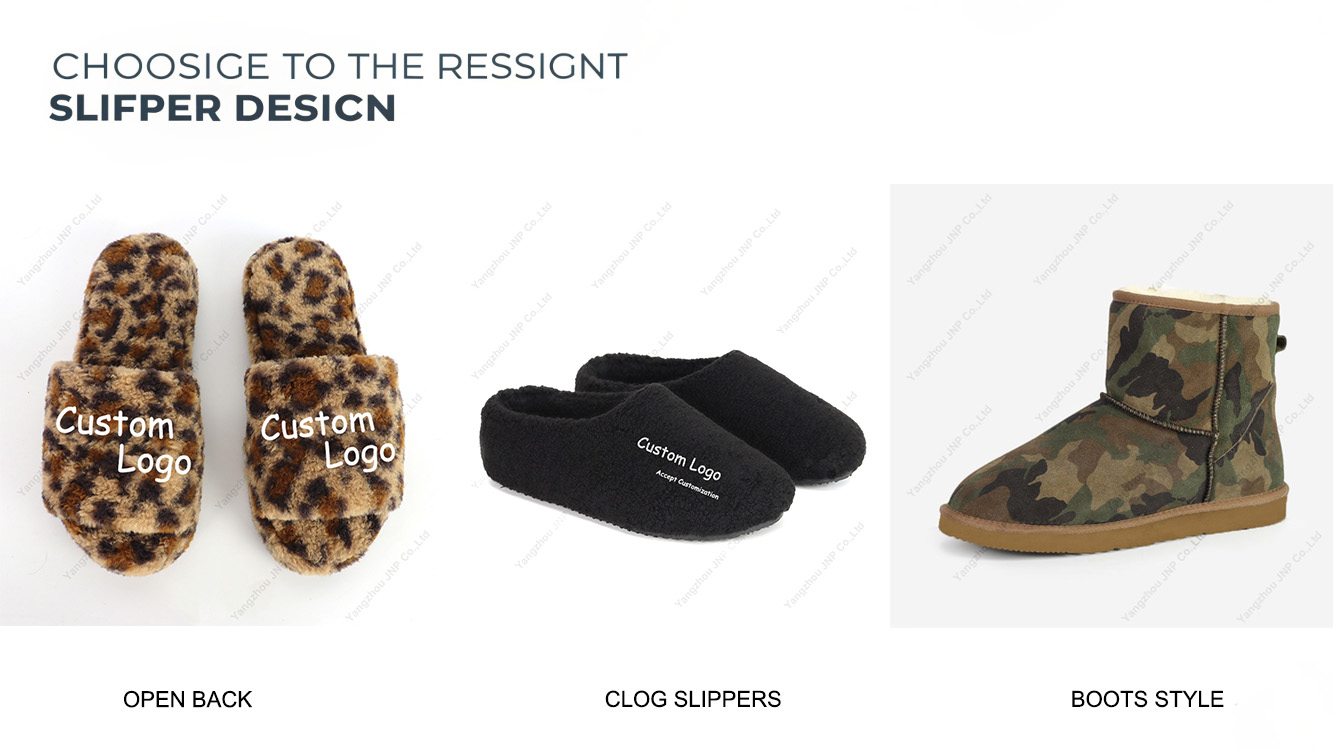
I once helped a buyer from New Zealand who sold wool products under his brand. His customers loved traditional looks, so we made closed wool slippers with small leather trims. For young, trendy buyers like Rural’s audience, bold colors and open designs with logos were more popular.
Your style can say a lot about your routine:
| Style | Look | Best For |
|---|---|---|
| Closed-back | Classic, full coverage | Cold homes |
| Open-back | Easy slip-on | Busy mornings |
| Boot-style | Cozy and warm | Winter months |
Choosing style is not about trend alone. It’s about how you live, how often you wear them, and what comfort means to you.
Why material quality affects durability?
The longer your slippers last, the better the investment.
High-quality materials like natural wool4, faux fur5, and suede uppers14 last longer, hold their shape, and resist odor buildup.
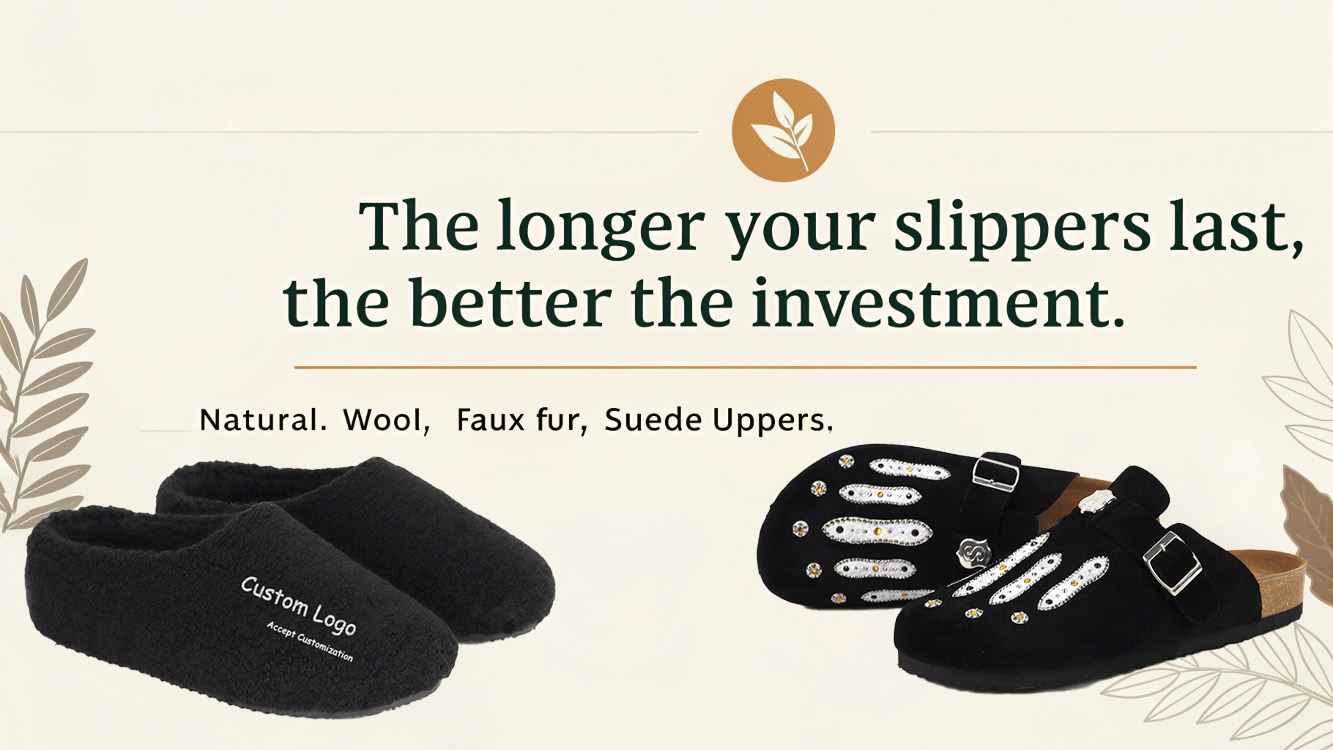
From my experience managing production for global clients, the main reason slippers fail early is low-density material15 or poor stitching. Factories we work with test each batch for durability and softness balance16.
For example, a wool upper may stretch slightly but return to shape, while cheap synthetic ones flatten fast. Investing in better materials also reduces odor and moisture buildup17, especially if you wear them daily.
| Material | Durability | Maintenance |
|---|---|---|
| Wool | High | Brush regularly |
| Faux Fur | Medium | Washable |
| Suede | High | Requires dry cleaning |
You don’t need the most expensive pair. You just need one made with care and tested for long wear.
Conclusion
Fluffy slippers should feel like home for your feet. When comfort, sole type, and material fit your lifestyle, you’ll know you’ve found the perfect pair.
Footnotes
-
Learn what makes fluffy slippers unique and how their materials affect comfort and durability. ↩
-
Breathable materials help prevent sweating and overheating, keeping your feet fresh and comfortable all day. ↩
-
Understanding slipper fabrics helps you choose ones that are soft yet durable for daily use. ↩
-
Natural wool offers temperature regulation, warmth, and moisture control, ideal for long-term comfort. ↩ ↩ ↩
-
Faux fur provides the plush comfort of real fur but is cruelty-free and often more affordable. ↩ ↩
-
Memory foam insoles provide ergonomic support that adapts to your foot’s shape, improving comfort and posture. ↩ ↩
-
Wood and tile floors can affect slipper comfort and wear; thicker soles provide better shock absorption. ↩
-
The slipper sole determines traction, comfort, and wear resistance on different surfaces. ↩
-
Rubber soles with anti-slip designs enhance safety on smooth indoor floors. ↩ ↩
-
Waterproof soles are essential for quick outdoor use, preventing water damage and slippage. ↩
-
EVA soles are lightweight and waterproof, making them ideal for versatile indoor-outdoor use. ↩
-
TPR soles are durable and grip well, suitable for extended outdoor wear. ↩
-
Different slipper styles affect warmth, convenience, and overall comfort based on your daily habits. ↩
-
Suede uppers combine luxury and strength, maintaining shape while resisting wear. ↩
-
Low-density materials compress quickly and reduce slipper longevity. ↩
-
Material durability testing ensures that slippers maintain comfort and resilience over time. ↩
-
Managing moisture buildup prevents odor and extends the life of your slippers. ↩

